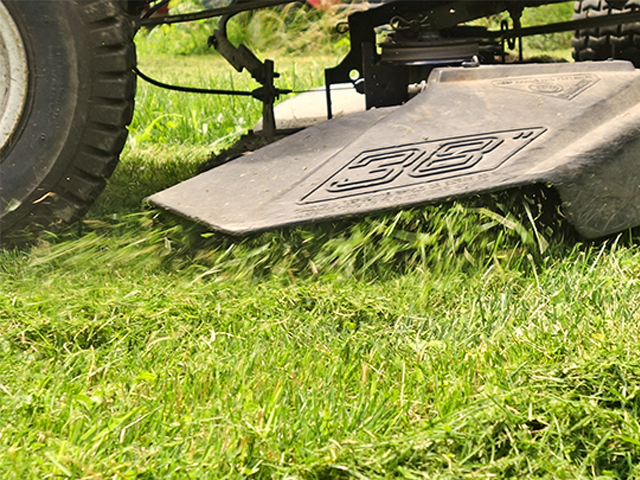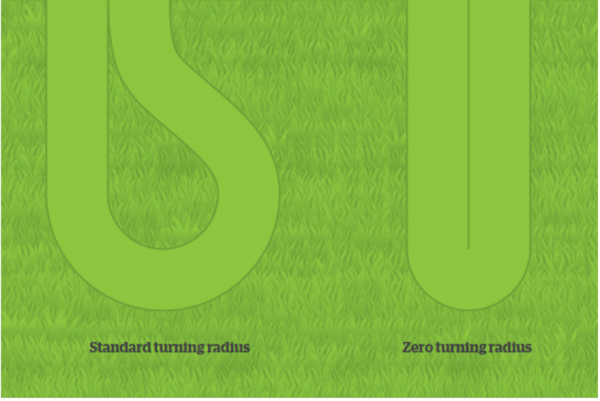How do Zero-Turn Mowers work?

Fast, efficient and easy to use, we believe you can’t beat a zero-turn mower. Here’s a quick rundown of how they work and what makes them so great.
History of Zero Turn Mowers
There’s debate over who really invented the zero-turn mower. In 1949 a man called Max Swisher created a zero-turn mower that had one wheel at the front and two at the back, making it capable of doing 360 degree turns virtually on the spot.
Then, in 1963, another man called John Regier adapted the steering system and transmission designs used in some agricultural equipment he helped develop and this led to the creation of the first zero-turn mower.
Which mower is right for your property? Find out everything you need to know before you start. Get your free guide now.
Why are they called ‘zero-turn’?
This term refers to the turning radius being zero inches or a zero-degree-turn radius. It can do this thanks to its specialised way of steering. Put simply, the mower can turn within it’s own length, or as some say ‘turn on a dime’.
Steering
Some zero-turn mowers have steering wheels, although this style has largely been rejected by most manufacturers after a resurgence saw one brand bring out a steering wheel model in 2016. Most use a method called differential steering - changing the speed of the wheels to steer. To that end, most zero-turn mowers are operated using two levers that control the back wheels individually. Each back wheel has its own joint transmission and wheel motor, known as a transaxle.
- To go straight ahead push both levers forward
- To reverse or slow down pull both levers backwards
- To curve right push the left handle forward
- To curve left push the right handle forward
- To pivot in place move one lever forward and the other back with equal force
- To swing around push the appropriate handle forward while keeping the other in neutral

It is this ability to turn on the spot and manoeuvre in and around objects up close with ease that makes mowing time so much faster with a zero-turn. You’re simply able to cover more grass in less time. Be aware that it takes practice to operate a zero turn with ease and avoiding scuffing – but don’t be put off – anyone can drive one with as little as 30 mins seat time, regardless of machinery experience!
What kind of terrain are they good for?
You’ll get peak performance from a zero-turn mower on large, open, flat areas. You can use zero-turn mowers on small slopes but we’d recommend talking to an expert first beforehand to make sure you get the right mower to handle it.
If you’re wondering if a zero-turn mower is right for you, download our FREE guide to help you decide.